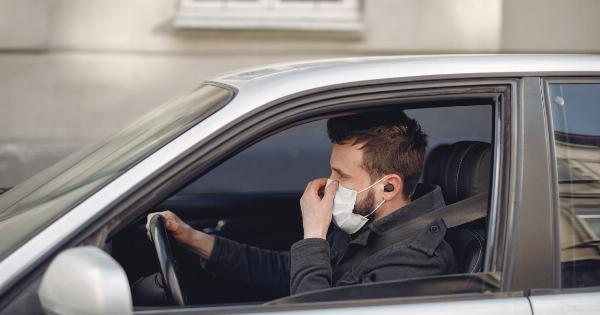Safe driving is not only crucial for protecting your life and the lives of those around you, but it can also impact your car insurance premiums.
Car insurance providers consider several factors when determining the cost of your coverage, and one of the most significant is your driving record. Maintaining a clean driving record can lead to more affordable car insurance rates, while a history of accidents and traffic violations can cause premiums to skyrocket.
Why Does Safe Driving Matter to Insurance Companies?
Insurance companies assess the risk associated with insuring a driver before deciding on a premium. A driver who has a record of collisions or traffic violations is considered higher risk, indicating that they are more likely to file a claim.
On the other hand, a driver with a clean driving history is seen as a lower risk, as they have demonstrated responsible behavior on the road.
Insurance providers use statistical data to determine the probability of an accident or claim based on various factors, such as age, gender, location, and driving record.
Statistical evidence consistently shows that drivers with a history of accidents or traffic violations are more likely to be involved in future incidents. As a result, insurance companies charge higher premiums to offset the increased risk and potential financial losses.
The Benefits of Safe Driving
Safe driving not only helps you save lives and avoid costly accidents but also offers considerable financial advantages. By driving safely and maintaining a clean driving record, you can enjoy the following benefits:.
Lower Insurance Premiums
As mentioned earlier, insurance companies charge higher premiums to drivers with a history of accidents or traffic violations.
Conversely, if you consistently practice safe driving habits and have a clean driving record, you are more likely to qualify for lower insurance premiums. This can save you a significant amount of money over time.
Accident Forgiveness
Some insurance providers offer a feature called “accident forgiveness.” This means that if you have been a safe driver for a specific period, typically a few years, your insurance provider will not increase your premium after your first at-fault accident. Accident forgiveness can protect you from experiencing a sudden and substantial increase in your insurance rates if an unfortunate incident occurs.
No Claim Discounts
Safe driving not only reduces the likelihood of accidents but also decreases the frequency of insurance claims. Insurers often reward policyholders who have not filed any claims over a certain period with discounts on their premiums.
This incentive encourages safe driving habits and provides financial benefits for responsible drivers.
Practical Tips for Safe Driving
Now that you understand the relationship between safe driving and affordable car insurance, here are some practical tips to help you become a safer driver:.
Observe Traffic Laws
Follow all traffic laws, including obeying speed limits, stopping at red lights and stop signs, and using turn signals when changing lanes.
Traffic laws are designed to ensure the safety of all road users, and adhering to them reduces the risk of accidents and traffic violations.
Avoid Distractions
Keep your attention focused on the road and avoid distractions such as texting, calling, eating, or applying makeup. Distracted driving is a major cause of accidents and can have severe consequences.
By staying focused, you can react quickly to any unexpected situations on the road.
Maintain a Safe Following Distance
Keep a safe distance from the vehicle in front of you to allow for ample reaction time. This will give you enough space to brake or maneuver in case of sudden stops or changes in traffic conditions.
Maintaining a safe following distance reduces the likelihood of rear-end collisions.
Avoid Speeding
Observe speed limits and adjust your speed based on road conditions. Excessive speeding increases the risk of losing control of your vehicle and makes it more difficult to react to potential hazards.
It is important to prioritize your safety and the safety of others over reaching your destination a few minutes earlier.
Use Signals
Always use your turn signals when changing lanes or making turns. Signaling your intentions allows other drivers to anticipate your movements and helps maintain a smooth flow of traffic.
Failure to use turn signals can lead to confusion, potentially resulting in accidents.
Avoid Reckless Driving
Reckless driving, such as tailgating, weaving through traffic, or running red lights, significantly increases the risk of accidents. Patience and consideration for others on the road are essential for safe driving.
Avoid aggressive behaviors that can endanger yourself and those around you.
Stay Alert in Adverse Conditions
Adverse weather conditions, such as rain, snow, or fog, can make driving more challenging. Reduce your speed and increase your following distance to adapt to the conditions.
Stay alert and be prepared for unexpected situations that may arise due to poor visibility or slippery road surfaces.
Regular Vehicle Maintenance
Ensure your vehicle is well-maintained by scheduling regular inspections, staying up to date with oil changes, tire rotations, and other recommended maintenance tasks.
A properly maintained vehicle is less likely to experience mechanical failures, which can lead to accidents.
Invest in Driver Education
Consider taking advanced driver education courses to enhance your skills and knowledge of defensive driving techniques.
These courses can help you gain a better understanding of potential risks and teach you how to react in critical situations, improving your overall driving abilities.
Conclusion
The relationship between safe driving and affordable car insurance is clear.
By practicing safe driving habits, maintaining a clean driving record, and avoiding accidents and traffic violations, you can enjoy lower insurance premiums, accident forgiveness, and potential discounts from your car insurance provider. In addition to the financial benefits, safe driving protects your life, the lives of others, and promotes a safer road environment for everyone.





























